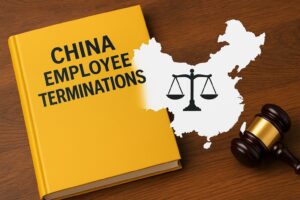
An investigative report into the mass lead poisoning of hundreds of students and staff members at a kindergarten in Gansu province has revealed a host of safety and oversight violations, bribery and corruption, medical misconduct, and attempts to cover up the scandal. The unusually frank report, released by Gansu provincial officials after weeks of heated online discussion about the case, confirmed some of the public’s worst suspicions about the institutional failures that allowed the toxic lead exposure to persist for over a year.
The incident began when the principal (surnamed Zhu) and primary investor (surnamed Li) of Peixin Kindergarten in Tianshui, Gansu instructed school staff to add powdered pigments to cafeteria fare to make the school’s meals look more colorful and enticing online, in a bid to increase enrollment. The industrial pigments contained a high concentration of lead and carried clear warnings on the packaging cautioning that they were not meant for human consumption. Over time, as many of the students became ill—some had blackened teeth, a sign of lead poisoning—testing revealed that 247 current pupils, five former pupils, and 28 teachers and staff members had elevated blood lead levels. (According to the investigative report, 234 of the children were hospitalized and later discharged, and one remained in the hospital.) Many of the affected families were frustrated by obstruction and evasion by the school and local health authorities, and had to navigate a web of denials, unconvincing explanations, improperly conducted blood tests, and manipulated blood test results.
Vivian Wang at the New York Times reported on the investigation’s conclusions, including its finding that provincial health officials and hospital personnel had helped to cover up the lead poisoning—in some cases, by tampering with blood test results:
The poisoning stemmed from powdered pigments that the school staff had used as food coloring, the report said. Some of the pigments, which were marked as inedible on its packaging, consisted of more than 20 percent lead; lead levels in the food the children were given exceeded the national food safety standard by 2,000 times.
But the investigation results further fueled public outrage at the official misconduct on multiple levels. Some parents at the preschool had already said they suspected a cover-up, even taking their children to other provinces for testing. Now their fears were confirmed.
[…] In the Tianshui case, parents who took their children for testing in neighboring Shaanxi Province said the results of tests administered there showed significantly higher lead levels than those taken in Gansu.
Six people have been arrested, including the preschool’s principal, the school cooks and the investor who had given unauthorized gifts. Another 17 people are under investigation, including leaders of the hospital, the provincial health commission and the city’s education bureau.
After the report was published, commenters online said that the official cover-ups would undermine trust in the government. While some praised the level of detail in the latest official report, others questioned whether it, too, might have some gaps. [Source]
For the families and the general public, many questions and unresolved issues remain. The exposure of “a chain of institutional failures” that sickened so many young children continues to generate widespread outrage. At the Guardian, Helen Davidson described protests that reportedly took place outside the school after the release of the investigative report:
The release of the report was accompanied by reported protests by parents on Sunday evening outside the kindergarten. Footage shared online by Teacher Li, who monitors dissent inside China, claimed to show clashes between police and a few hundred people outside the Tianshui kindergarten.
The footage showed officers using physical force, including batons, and angry parents confronting individuals in plain clothes, questioning their use of violence. As police cars appeared to try to escort the plain-clothed individuals away, parents blocked the road, shouting: “Hand over those who beat people up.” [Source]
In addition to being a trending topic online, the Tianshui case has been widely written about by Chinese bloggers, commentators, educators, and food safety experts. CDT Chinese editors have archived over two dozen articles on the topic, at least ten of which have been censored. A now-deleted article from WeChat blogger Wei Chunliang described the cover-up attempt as symptomatic of a trend toward local public-opinion management that has “reached the point of obsession.” WeChat account Guanhai Finance discussed some of the rumors and suspicions that spread online in the weeks before the investigative report was released, when the public was desperate for more information. Initially, there was intense skepticism about the “pigment theory,” with many observers and experts insisting that the amount of lead contained in pigments available for purchase online was insufficient to account for the children’s astronomically high blood lead levels. Some proposed an alternate “dual exposure” theory in which both the cafeteria food and lead-polluted water or soil might have resulted in the lead poisoning. Many observers and experts took this theory seriously, as Tianshui was the site of a well-publicized 2006 environmental lead-pollution scandal and there is still some heavy industry located nearby. A since-deleted post from former journalist Song Zhibiao noted that nowadays when scandals emerge, official statements have very little ability to sway public opinion, given that the public has such distrust of and low expectations for self-serving, face-saving press releases by local governments.
Quite a few articles focused on the problem of industrial pollution, particularly in areas where mining, metal smelting, and other extractive industries prevail. The WeChat account “Intelligentsia” published a well-researched and heavily footnoted piece on the 6.7 million Chinese children at high risk for lead exposure, while blogger Zhang Chuanlin wrote about past industrial pollution scandals, and the continued risks of exposure to lead, cadmium, thallium, arsenic, and benzene. In another WeChat piece, Zhu Wenqiang compared Tianshui’s recent lead-poisoning scandal with another that occurred in the exact same area in 2006.
Other writers framed the lead-poisoning incident in terms of the explosive expansion of early childhood education in China, the sometimes poor quality of preschools and kindergartens, and of the profit-driven decisionmaking that often drives school administrators and their financial backers. An article last year from Sixth Tone reported that the number of kindergartens in China rose “from 181,300 in 2012 to 274,000 [in 2023]. More than 90% of preschool-age children in China were enrolled in kindergarten in 2023, a 26.6% increase compared with 2012, according to the Ministry of Education.” China’s Preschool Education Law, which took effect in June of this year, is intended to improve the quality of care and teaching in schools catering to preschool students.
Images shared online show two children receiving treatment in a hospital, and a close-up of a child’s mouth with blackened teeth (a sign of toxic lead exposure). (source: Ni Ren/WeChat account 黑噪音, “Black Noise”)
A now-deleted article from WeChat account 端端酱 (Duānduan Jiàng, “Duanduan Sauce,” written by a former reporter covering medicine and health) was titled, “A 6000-Word Report Exposes the Failure of an Entire System.” In it, the author dissects the investigative report and enumerates the many institutional failures—on the part of the school, educational authorities, local regulators, hospitals, and the provincial CDC—that allowed the lead poisoning of kindergarten students to snowball for over a year. A portion of the article is translated below:
But the weighty content of the report could not paper over the public’s anger and disappointment. I believe that many, like me, are left wondering: When we can’t trust data from top-tier hospitals, or testing results from the CDC, or inspections and oversight by regulatory authorities, or quality control by the educational system, who can we rely on to protect our children’s health?
This was no mere “local disaster,” but an institutional stress test. It proved that tragedy arises not from “mistakes made by a small number of individuals” but is an “institutional outgrowth” of an entire system that condones, overlooks, or even facilitates such misbehavior.
The places people once thought were the safest—schools, hospitals, and regulatory insititutions—have turned out to be cesspools, the first to be poisoned and the last to respond. And although the truth has now been brought to light, there needs to be a great deal more accountability, reparation, and systemic reconstruction if these institutions are to regain the trust of the public.
This report lays bare the tragic predicament of an entire system. The real question is not where those [lead-contaminated] pigments came from, but how our supposedly “rigorous” public health system failed to address the problem for over a year.
We prefer to believe that the world we inhabit is not some gimcrack, amateurish operation. But every time the truth is revealed, it hits us like a slap in the face, reminding us just how threadbare our illusions really are. [Chinese]
Another WeChat article, by blogger and socio-economic commentator Ni Ren, cautions the public not to be overly complacent about the investigation or its results. Ni Ren reviews the main points of the investigative report and identifies three lessons that should be taken to heart:
The official report was lengthy, and I spent a long time reading it.
Compared to reports issued after similar public incidents, this report was quite detailed and thorough. It made a point of addressing many of the issues raised by media outlets and bloggers, including details about the results of the investigation into the 2006 lead pollution incident [also in Tianshui].
This is because public opinion played a major role in this latest incident, with public outcry reaching a pitch rarely seen in recent years.
But the public should not be expected to feel grateful for this, because conducting a thorough investigation and releasing detailed results to the public ought to be the norm. These are the sorts of things that ought to have been done in the first place.
We must also remember the terrible price paid by over 200 children in this case, so we should not turn a “swift and thorough investigation” into cause for celebration.
After reading the report, I want to highlight three genuine lessons we can learn from this incident.
Lesson One
Hoping to entice parents with more colorful school meals, the kindergarten’s principal and his primary investor colluded to purchase brightly colored pigments [industrial pigments containing lead, and illegal for use in food] that caused an epidemic of lead pollution among the school’s students. This idiotic and nonsensical decision reflects the generally low standards rampant in the kindergarten education sector.
While education should be our top priority, kindergartens seem to enjoy a sort of “immunity” from quality control, for the sector is awash with substandard schools, teachers, and administrators.
Under normal circumstances, all kindergarten staff—from teachers to cafeteria workers—should possess the requisite educational and professional qualifications required to work in the field. But the reality is that working in a kindergarten has come to be seen as “garbage work.” It is hard enough to recruit willing kindergarten teachers, and the bar is even lower when it comes to hiring support staff.
Therefore, the first lesson is to treat children’s education as a task of the utmost importance, in which cutting corners or “just making do” is unacceptable.
The truest measure of a nation is how it treats its children. In this regard, the Tianshui lead-poisoning incident is a national disgrace, and one which should not be forgotten.
Please enact the following measures: systematically improve financial investment and building-construction standards for kindergartens; raise salaries and hiring standards for teachers and other kindergarten workers; and stop allowing kindergartens to be places where the “dregs” of the educational world accrete. What we need is a radical reform of kindergarten education.
Lesson Two
Corruption: behind this incident lurks rampant corruption.
The corruption in this case is widespread, permeating various levels of government and market regulators. It includes corrupt dealings between the kindergarten principal and the regulatory departments tasked with overseeing the school’s operation; corruption within educational departments (which, shockingly, allowed the kindergarten to operate without a permit); and legal and regulatory violations at the Gansu Provincial Center for Disease Control and Tianshui Second People’s Hospital.
A campus food-safety scandal has “uprooted a daikon radish” and with it, the “mud” of numerous corruption cases. This shows just how serious the underlying corruption—much of which has yet to be discovered—must be.
We cannot simply point to those who have been punished and applaud the results, for there is a more important lesson to be learned. What other corrupt officials still remain, and how do we stop their corrupt dealings?
There must be an independent, institutionalized, interference-free system in place to combat corruption and normalize anti-corruption work.
Lesson Three
As for the initial falsification of blood-test results, the full extent of that cover-up has yet to be fully investigated and punished, but that is what the public is most worried and concerned about.
The investigation found that testing personnel at the Gansu Provincial Center for Disease Control and Prevention committed “serious violations of operating procedures,” and that Tianshui Second People’s Hospital suffered from “chaotic management” and that its laboratory department “illegally altered blood-lead test results.”
The current investigative report lays the blame mainly on “testing personnel” and “laboratory departments,” which is far from adequate. Those who carried out commands were just following orders, so what really matters is who gave the orders.
Although the report mentions that investigations into supervisors at the Gansu CDC and Tianshui Second People’s Hospital have begun, we haven’t yet seen any pointed language or clear details about the investigation into the critical question of who orchestrated the cover-up.
It would be fair to say that when investigating incidents such as this, the most critical part of the process is “uncovering the cover-up.”
Some crises are unavoidable, and any system has the potential for crisis. The key is not to cover up these crises, because concealment compromises investigatory outcomes and causes even greater harm by allowing dysfunction to fester.
And if one locality succeeds in covering up a scandal, other places will follow suit. The result is that in the event of a crisis, the first instinct of local authorities is to try to put a lid on it, allowing the crisis to spread, leaving victims with no recourse, and causing the public to feel even more insecure and distrustful.
While this third lesson is the most profound and the most worthy of discussion, unfortunately it is not the main focus of the investigative report.
It is my hope that these three major lessons will serve as a genuine warning, and be recorded in our history as a mark of societal progress.
And I hope even more fervently that this will serve as an opportunity to improve the pervasively poor quality of our kindergartens, to root out rampant corruption, and to end the tendency to cover up in the event of a crisis.
Conducting an investigation into a single incident and meting out punishment is easy. The real challenge is finding a way to transform this tragic lesson into standard operating procedure, by creating a systematic mechanism to prevent such a tragedy from recurring. That is the only acceptable outcome from the suffering of those over 200 children. [Chinese]





